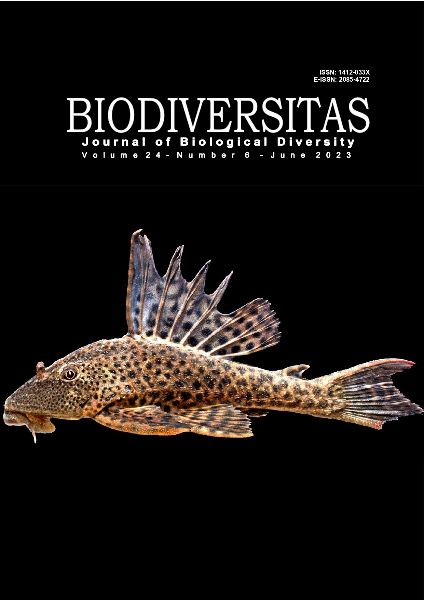Diversity and potential of herbaceous plants as mercury (Hg) hyperaccumulators in small-scale gold mining sites in Pancurendang, Banyumas, Indonesia
##plugins.themes.bootstrap3.article.main##
Abstract
Abstract. Muryani E, Sajidan, Budiastuti MTS, Pranoto. 2023. Diversity and potential of herbaceous plants as mercury (Hg) hyperaccumulators in small-scale gold mining sites in Pancurendang, Banyumas, Indonesia. Biodiversitas 24: 3378-3386. Plants resistant to mercury can be used as an alternative to processing gold mining waste with the phytoremediation method. The study aimed to inventory herbaceous plant species in artisanal and small-scale gold mining (ASGM) sites in Pancurendang Village (Banyumas, Central Java, Indonesia), measure mercury concentrations in plants and root zones, and analyze the potential of herbaceous plants as mercury (Hg) hyperaccumulators. Herbaceous plants were cataloged by purposive sampling with multiple quadrats of 2m x 2m in 14 locations and then analyzed to obtain density, frequency, dominance, importance value, and diversity index. Biomass and Hg concentrations were measured from selected herbaceous plants and soil samples of the root zone. The Biological Accumulation Coefficient (BAC) was calculated to determine the plants' potential as Hg hyperaccumulators. Plant inventory identified 54 herbaceous plant species belonging to 26 families, with Paspalum conjugatum P.J.Bergius being the dominant species. In the root zones, Hg was found at 11-73 ppm and 7.6-85.36 ppm in 19 species. Ipomea aquatica Forssk. accumulated the highest concentration (85.36 ppm) and absorbed the greatest amount of Hg (5.25 mg). Based on their BACs, the nineteen species were categorized into moderate to high (hyper) accumulators, with Plectranthus sp. having the highest BAC of 4.54.

